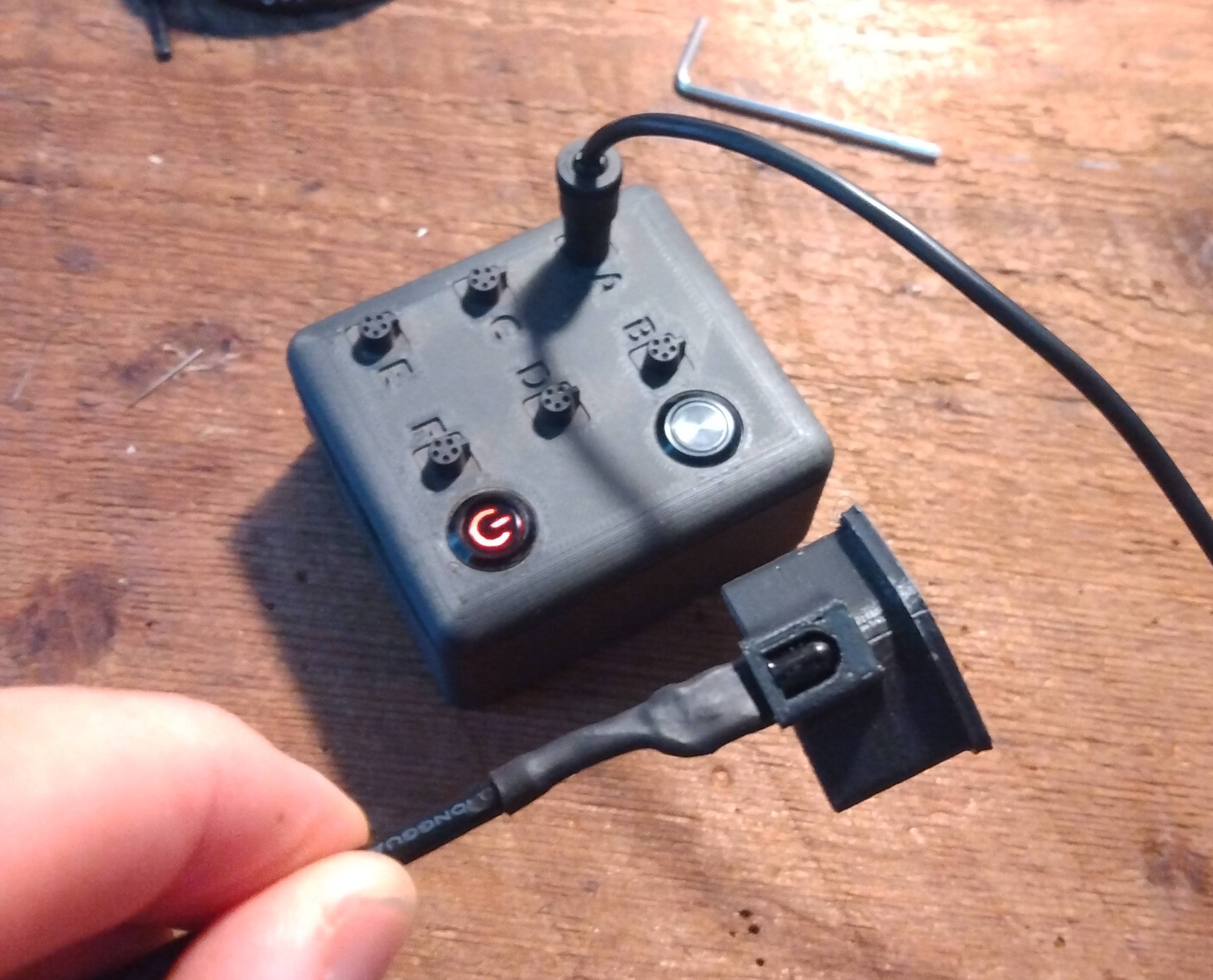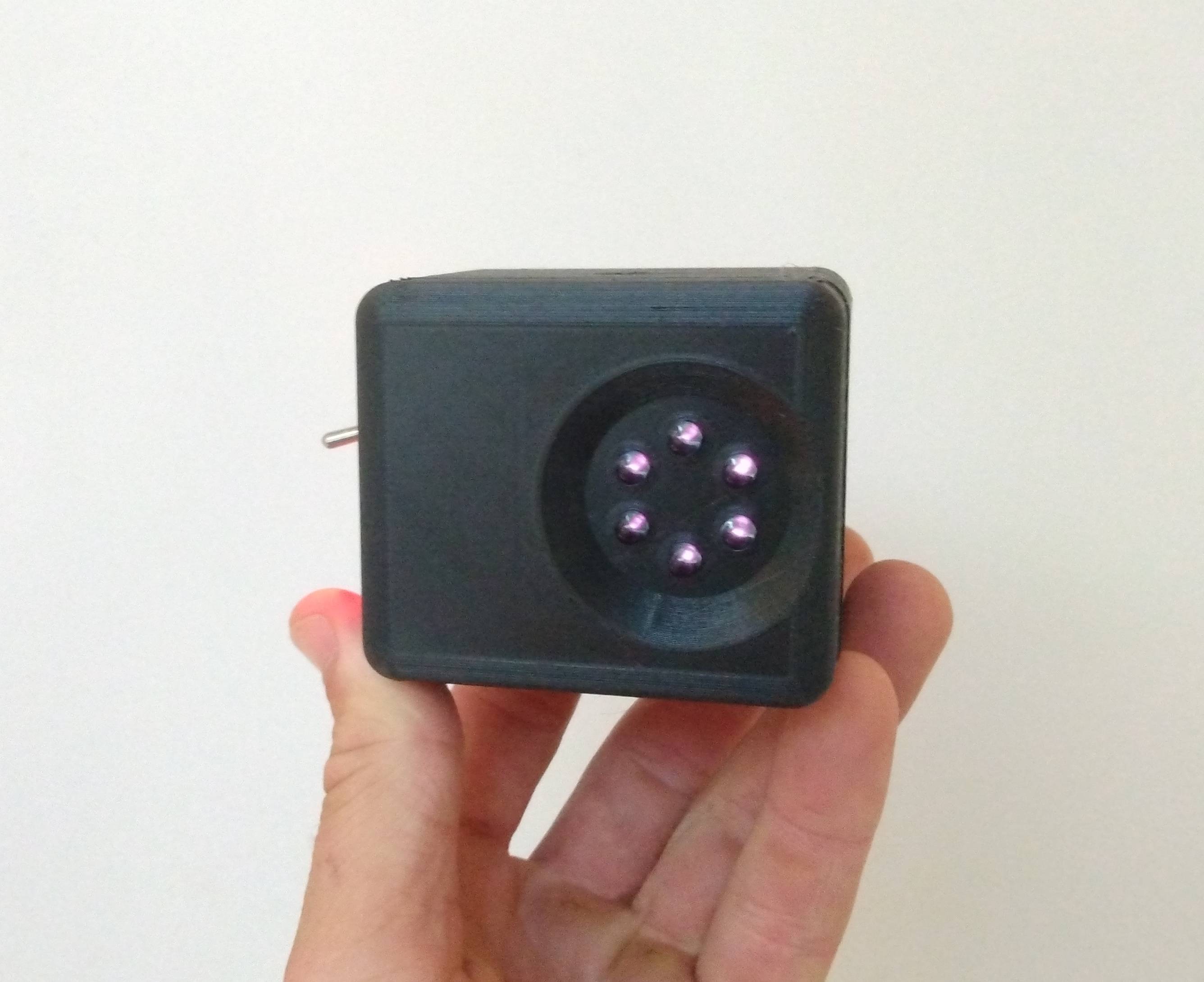IR Beacon
Position tracking beacon for outdoor applications
I had a project with a client that required the use of IR beacons as lap triggers. Finding a solid beacon with multiple IR leds to ensure a long sensing range and minimal false negatives in outdoor settings proved difficult. I found plenty of crappy ones on Amazon that wouldn’t fit the bill. The few good ones I found were expensive and would involve splicing some wires into a connector that would work with my Cass Data Logger. So I decided to make my own.
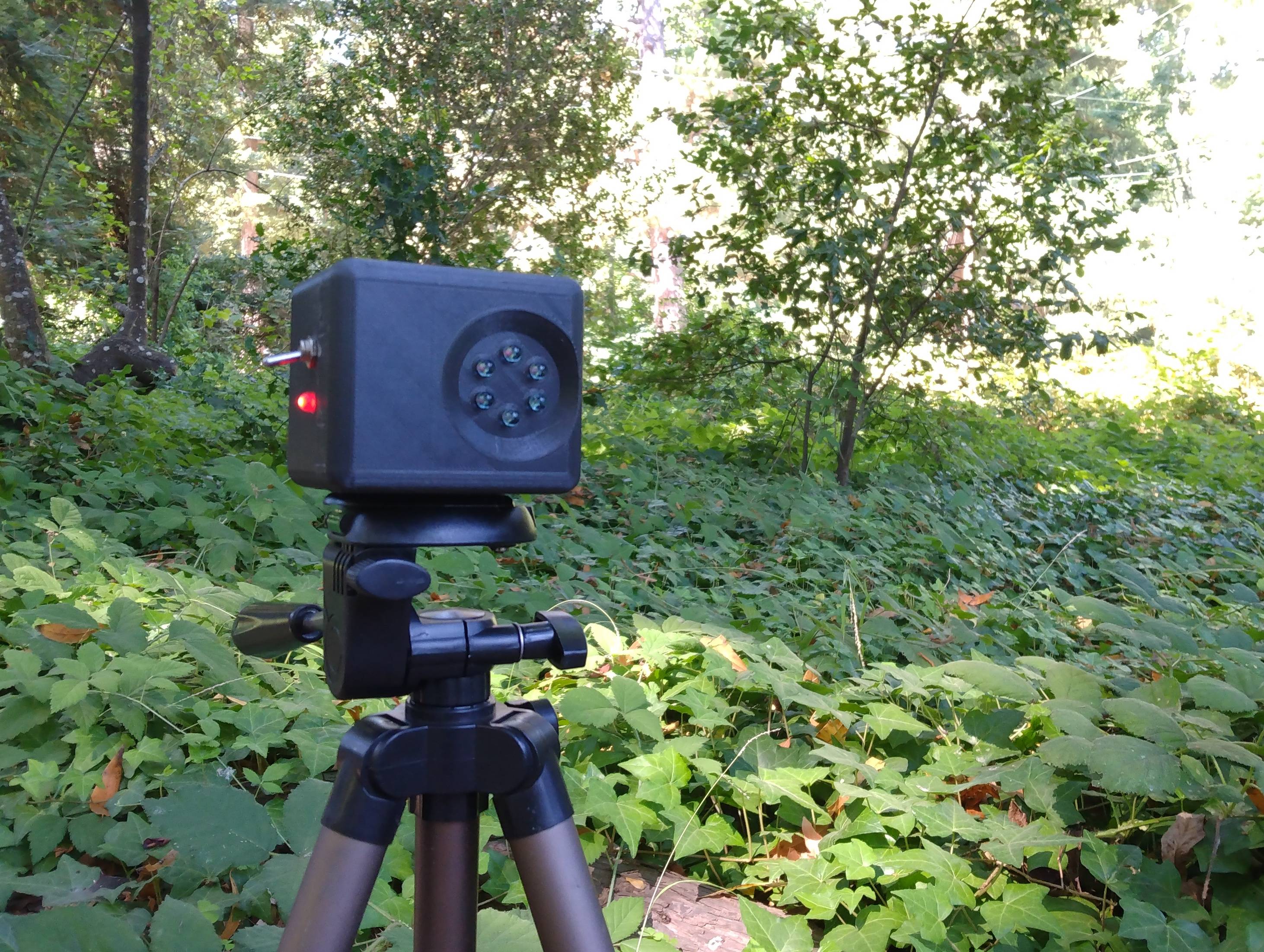
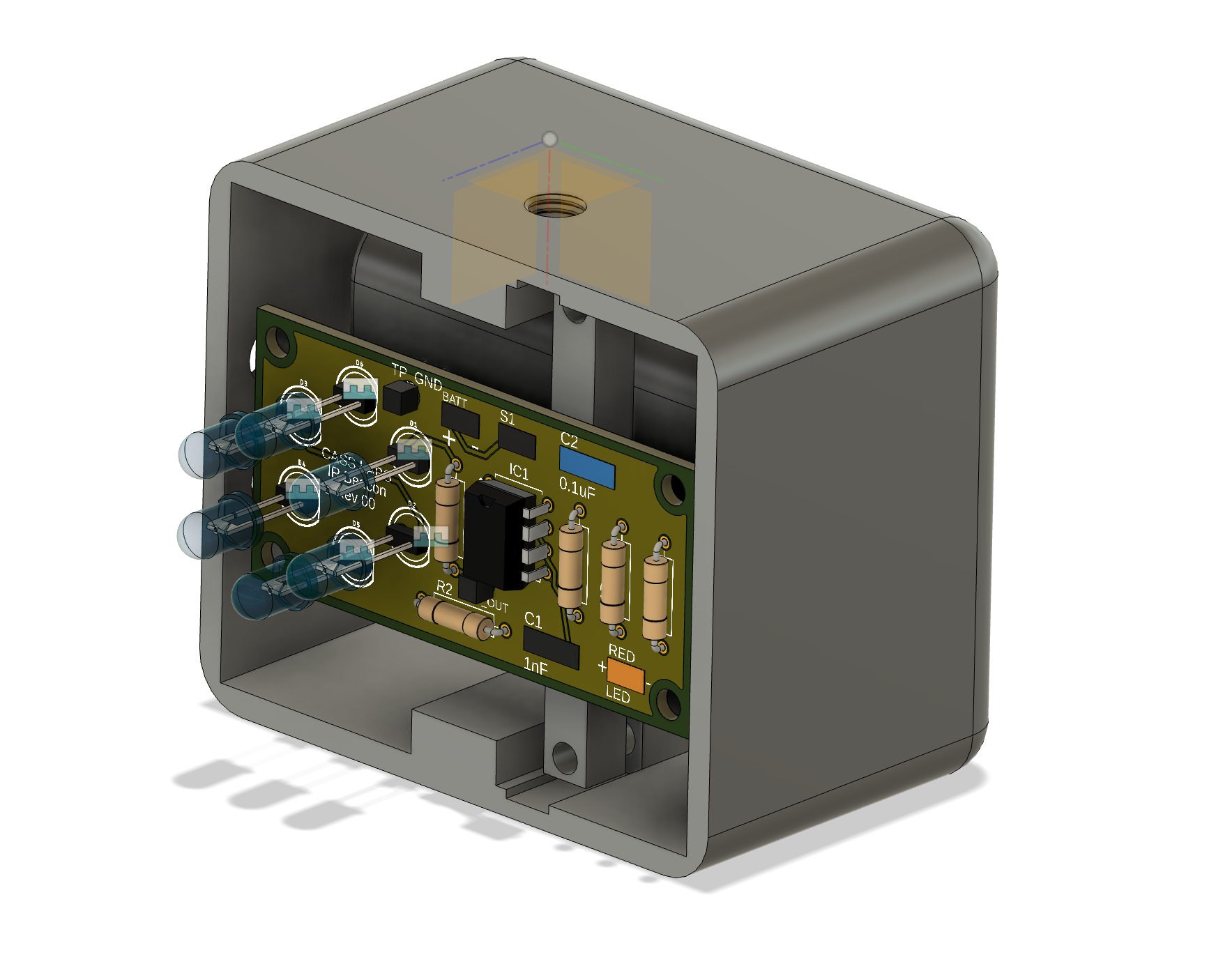
After realizing IR communication protocol involves a 38 kHz oscillation to prevent random IR noise from giving you false positives, I realized it would not be as simple as “turn on the LED.” The NE555 timer solved my issue, allowing me to tune the output to be 38 kHz PWM with a 50% duty cycle just by spec’ing a couple resistors and a capacitor. I powered the system with a 9V power supply using six AA batteries.
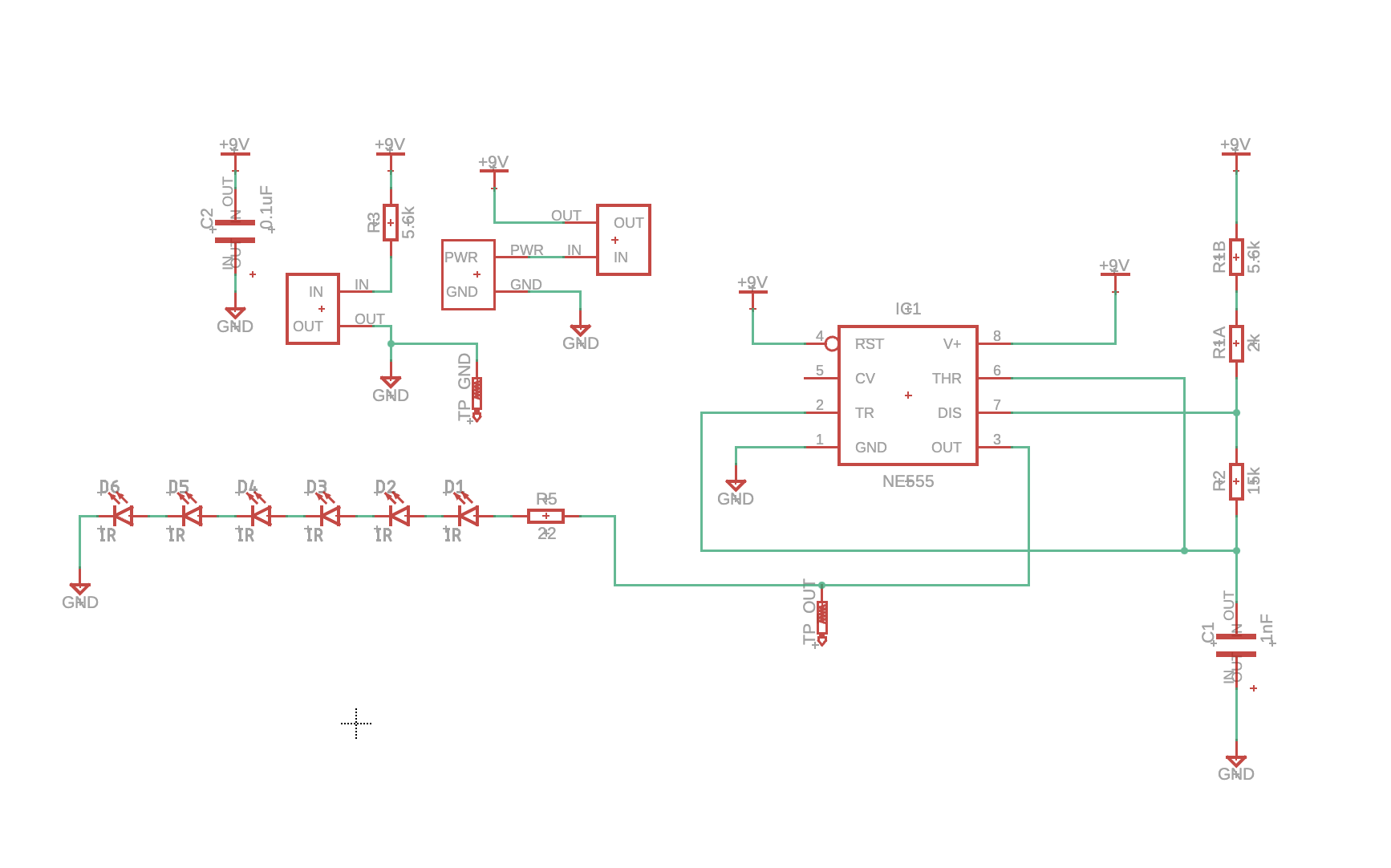
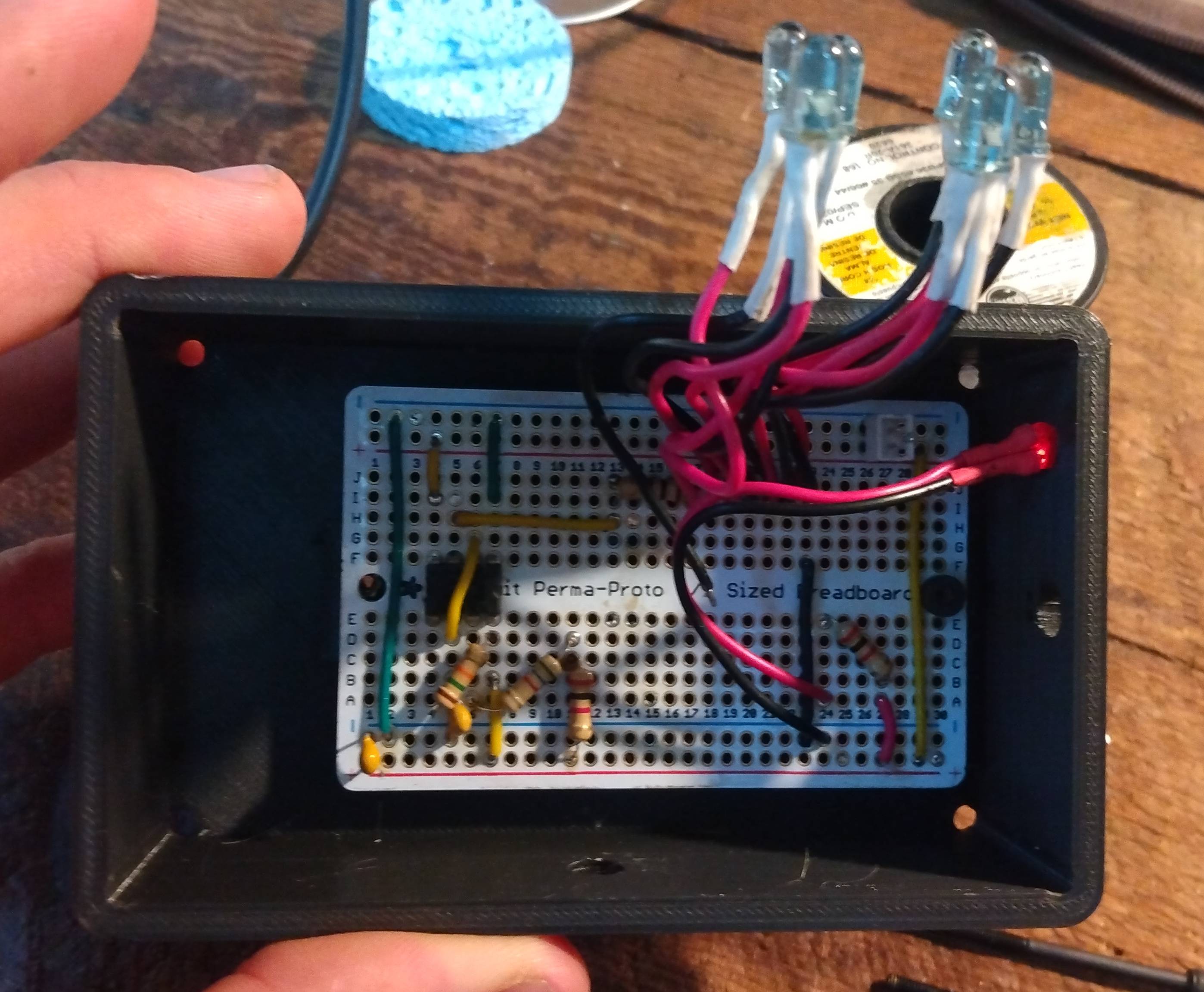
I added a couple other features to the circuit, tested the system on a breadboard, then protoboard, and eventually made a PCB. I designed the board with all thru-hole components that I place myself so I can use the boards for other potential LED blinky applications. I designed an enclosure for the whole thing that allows me to mount the beacon to tripods, which is usually how I position them out in the field. In an outdoor setting, I get a repeatable sensing range of eighteen feet!

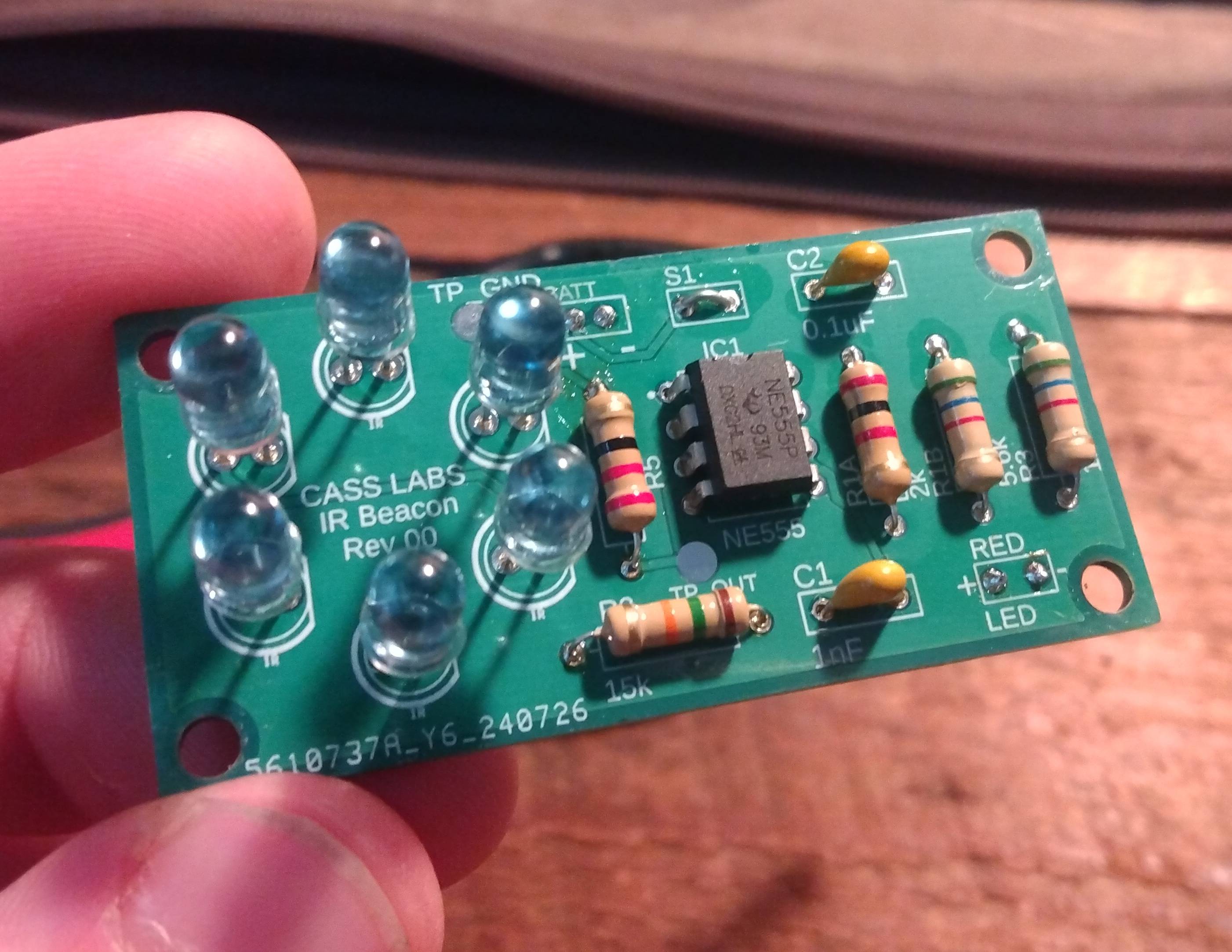
The beacons are up and running. I’m currently using them for simple lap triggers to filter segment data for some mountain bike testing I am working on. But now that I have these super cheap beacons, I can line twenty of them up in a short segment for super accurate position tracking to do more detailed analysis of ride segments or for validating physics models with in-field data.
